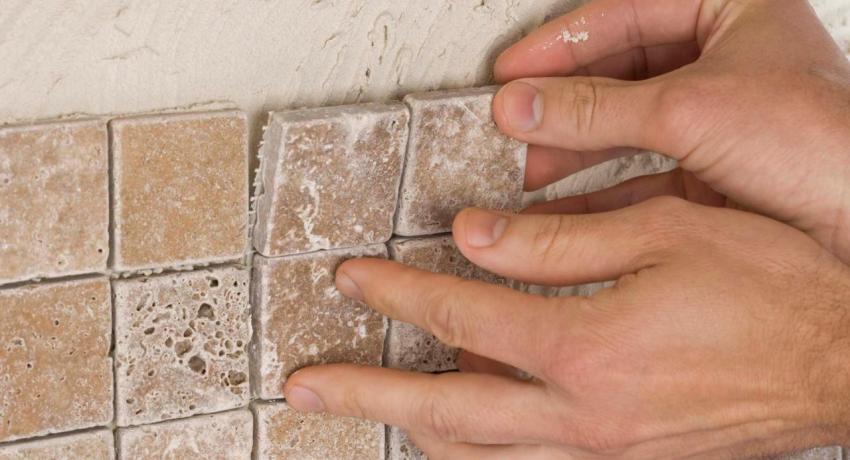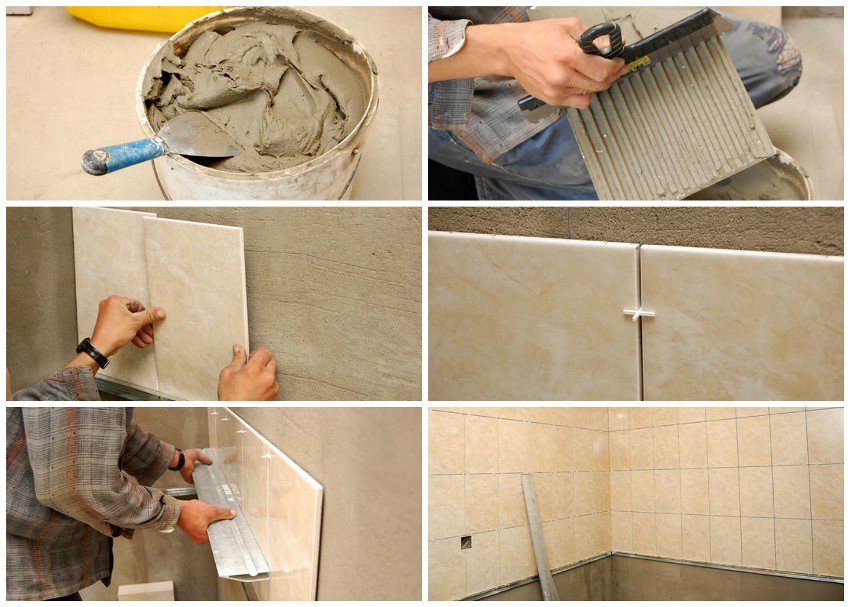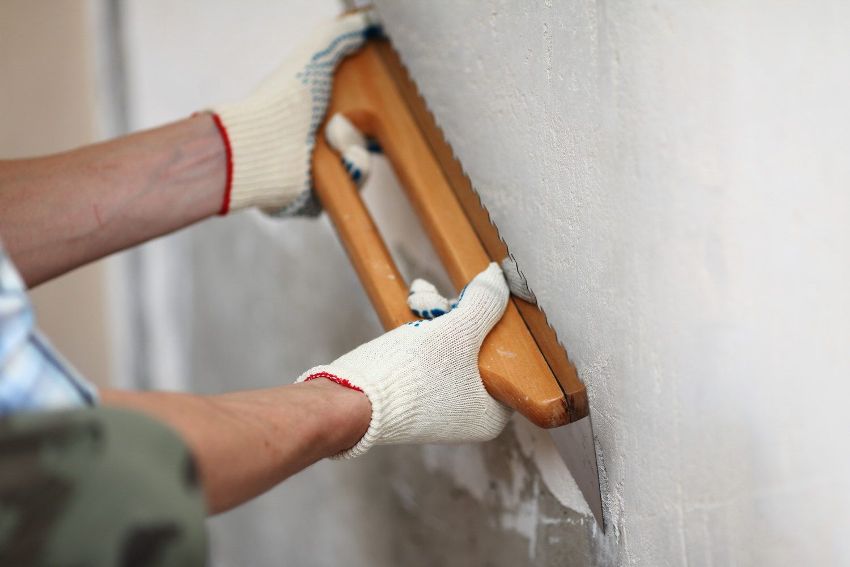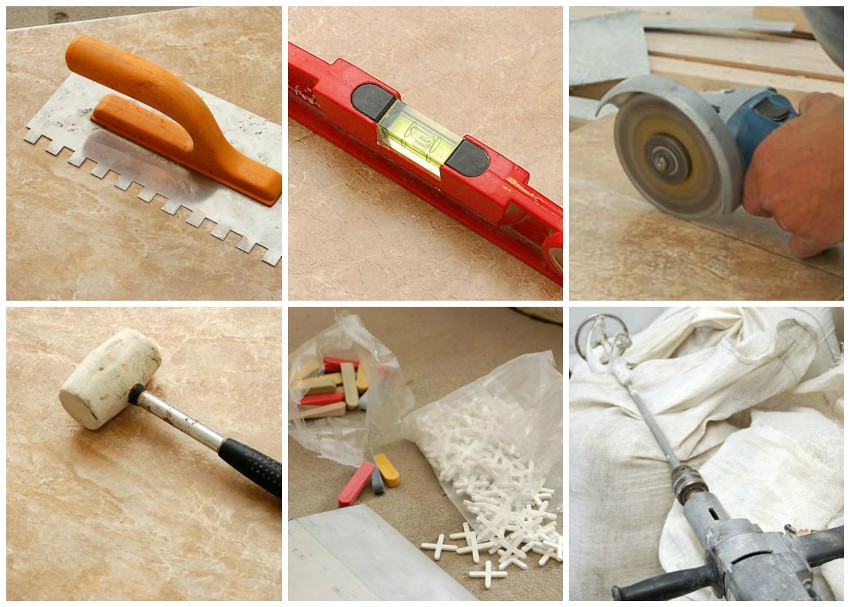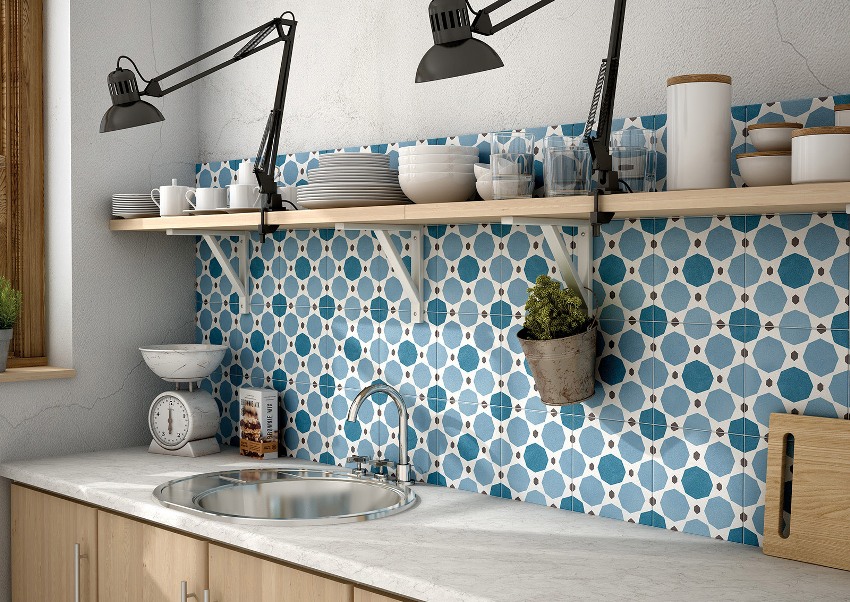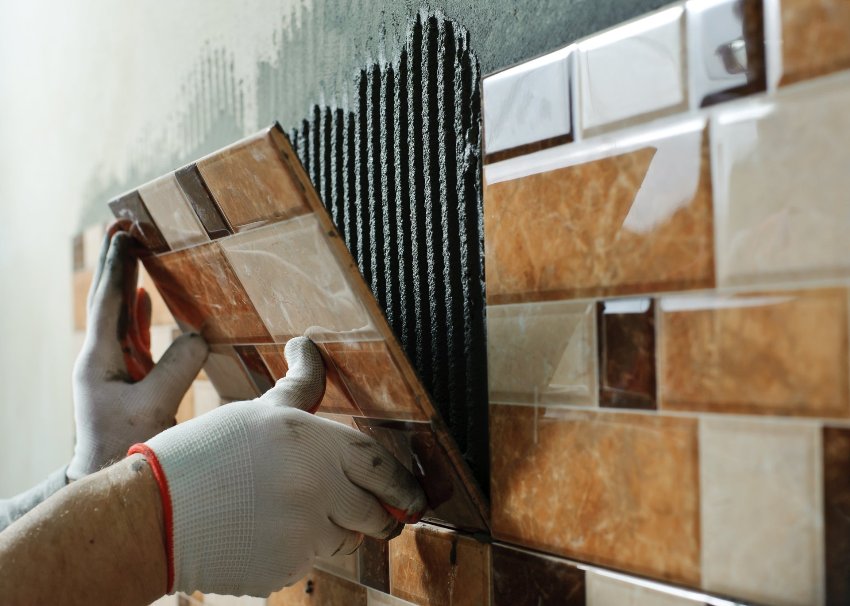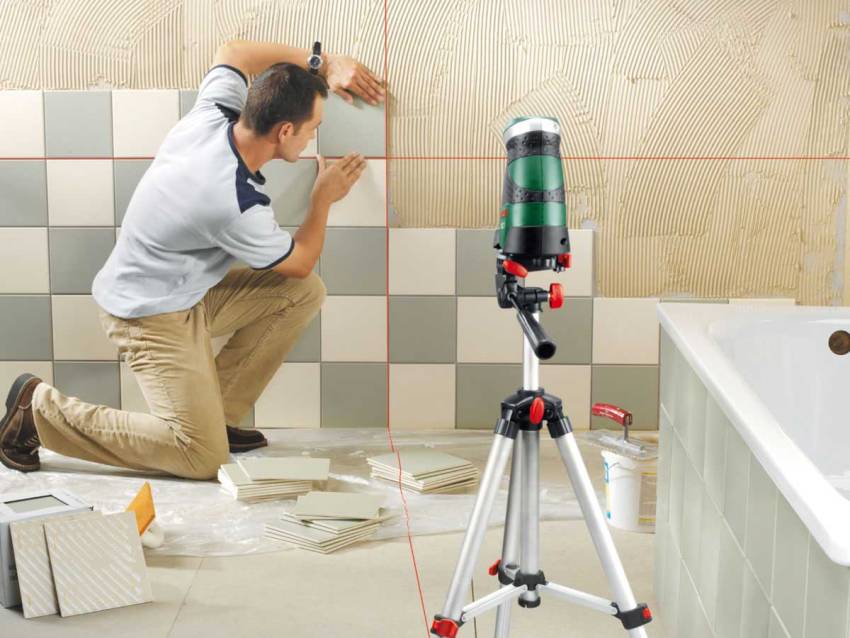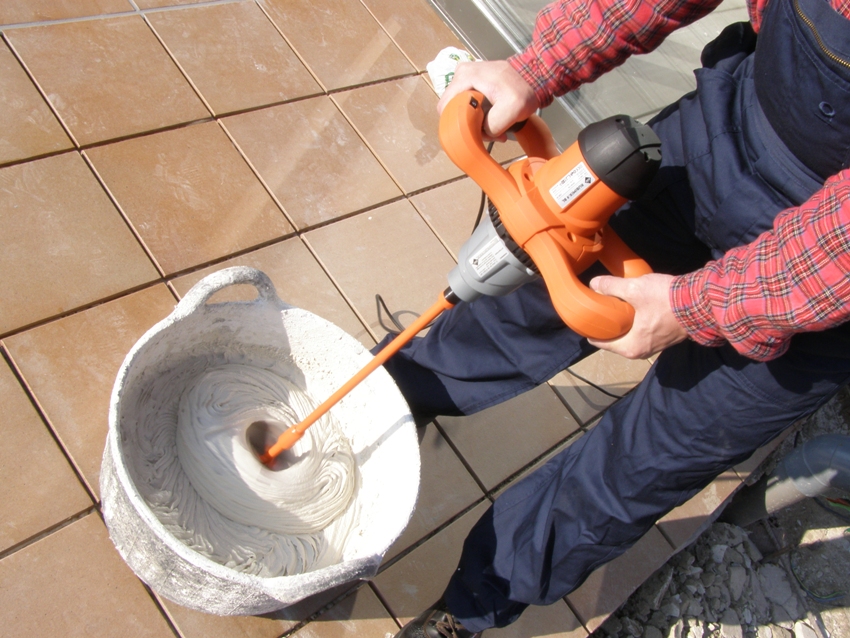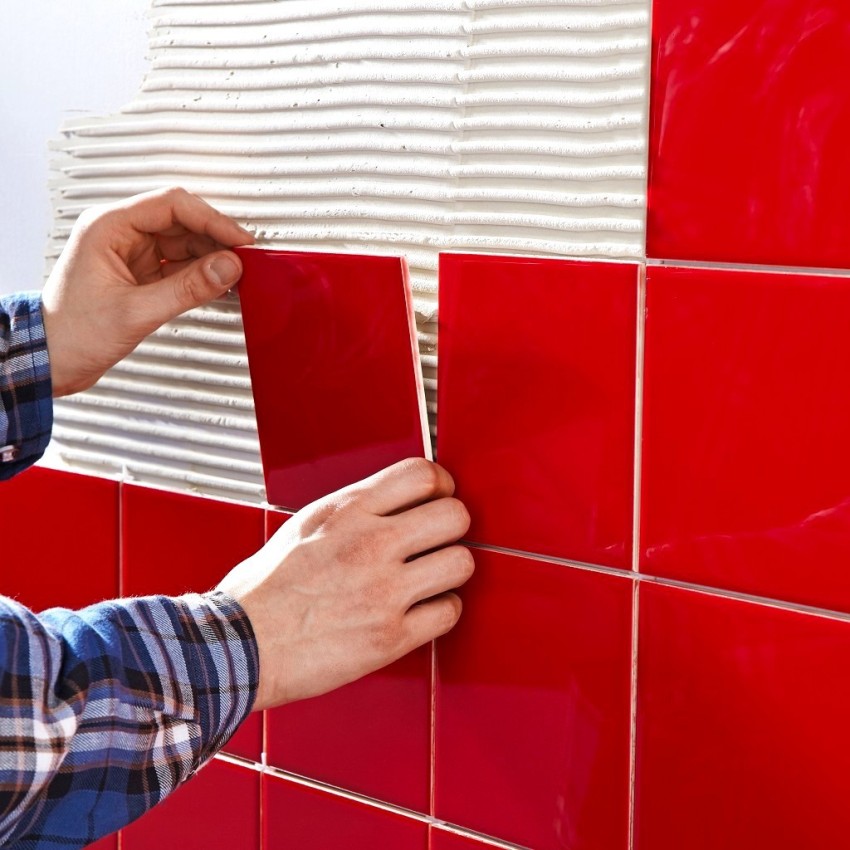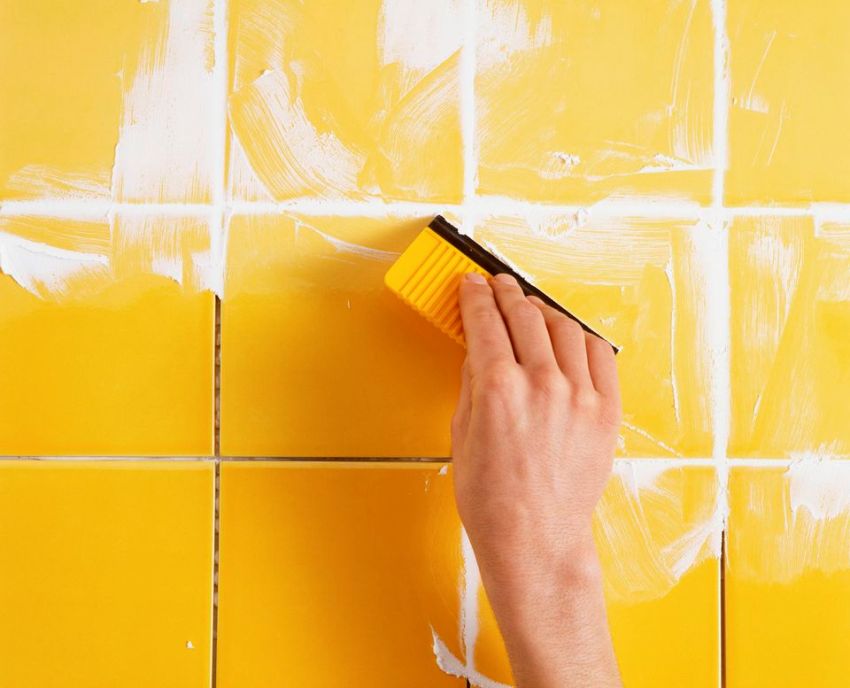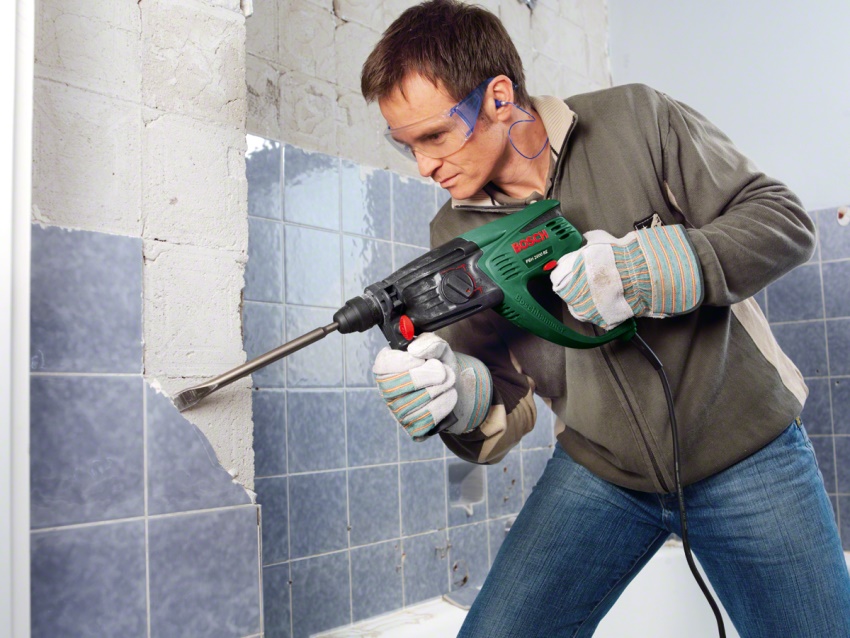The advantages of using tiles as a facing material have been discussed more than once. It is easy to care for ceramics, it is resistant to mechanical stress and is able to serve properly for many years. However, ordering a professional tile installation is not cheap pleasure, which is why many people carry out installation work on their own. The article will discuss how to properly prepare the surface and how to lay tiles on the wall.
Content [Hide]
How to properly lay tiles on the wall: surface preparation rules
In order to start preparing the wall for laying tiles, it is initially necessary to decide what type of mortar will be used for cladding. There are two options: cement-sand mortar and special adhesives. Depending on which option is preferred, the preparation of the walls for the tiles will differ.
Many people want to make a choice in favor of glue, but in this case they will have to work hard on leveling the walls under the tiles. Usually, plaster is used for this purpose or the surface is sheathed with plasterboard. The smoother the surface, the better. If it was decided to use a cement-sand mortar, then less effort will be required in order to level the wall under the tiles. How do you choose the best option? The first method is much simpler and suitable even for beginners. But the "solution" technique requires skills and experience.
Speaking about how to prepare the walls for tiles in the bathroom, do not forget about the presence of a large number of communications that can interfere with installation. The simplest solution to this problem is to hide all the pipes before gluing the bathroom tiles to the wall. The easiest way to do this is with drywall structures.
Important! Before proceeding with the leveling of the walls before laying the tiles, it is necessary to make sure that the old covering is completely dismantled. This also applies to paint. If there are residues that can crumble, the life of a new tile can be significantly reduced.
What tools are needed to tiling works
Before starting work on surface preparation and laying the facing material, you must make sure that you have all the necessary tools for this:
- trowel and spatulas (regular, notched and rubber);
- building level;
- tile cutter and wire cutters;
- a grinder and a diamond wheel for her;
- special crosses for laying tiles;
- foam sponge.
Additionally, you will need a tape measure, a hammer and other tools, which are probably in every home. In addition, you should think in advance about how the glue solution will be kneaded. It is advisable to have a special drill bit for this purpose, but this can also be done manually.
How to properly tile the wall
The first rule that you need to know before laying tiles on the wall is that all places that are important for visual perception should be lined with solid elements. Tiles that had to be trimmed should be hidden behind pieces of furniture or in places where they will be least noticeable.
The calculation of the required amount of materials is carried out even before the start of work and, in particular, leveling the base. This is done because it provides the opportunity to make some changes, for example, applying a slightly larger layer of plaster. In this case, the result will be some loss of area, but this is not so problematic than if you have to look at an imperfectly laid surface for many years.
Useful advice! If all corners of the room are equally visible in the field of view, then the best option would be to make the same cropping of all corner elements.
As for vertical clipping, the rule of the whole tile at the top applies here. Although it is important to pay attention to individual data. It is perfectly acceptable to break the rules if objectively it will affect the situation positively. You should also pay attention to the size of the tile joints. On the surface of a small area, in total, they take up quite a lot of space.
The marking technique largely depends on which method of laying the tiles was chosen. The most popular are the following types: "seam in seam", staggered and diagonally. The first method is the most popular. Its main difficulty is that in no case should the vertical and horizontal boundaries be violated, as this will be very noticeable. The most difficult method proposed is the third. It requires a certain skill and experience. But the second is universal. It imitates brickwork and is quite easy to install.
How to install tiles on the wall: general rules
Usually, tiles should be laid on the wall starting from the second or third row. This is due to the fact that wall tiles must cover the floor tiles for a number of reasons:
- visually, such a solution looks better;
- water that will drain over the wall surface will not flow into the contour seams;
- trimming wall ceramics is much easier.
Often you have to deal with situations where the floor covering was laid in advance. In this case, you need to start laying the wall tiles from the bottom row. But here another difficulty arises - it is far from always possible to do without pruning and place a solid tile in the top row.
The first thing to do is to decide on the lighthouse row and mark the top edge of the first row. It is important to use a level in the process of work so that in the future the entire tile does not "float".
Important! At the marking stage, it is very important to pay attention to all the difficult points, such as laying tiles around pipes.Some offset of the marks is allowed if this avoids the need to make complex cuts.
After that, you need to pull the lighthouse cord or draw a solid line along the marks. It is better to use the first option, as this will make it possible to more accurately control the horizontal. To maintain verticals, use conventional plumb lines.
Putting the tiles right: step by step instructions for work
It is important to understand that the installation procedure can differ significantly depending on what surface and with what composition the installation will be carried out. Therefore, if you know how to glue tiles on the floor, this does not at all guarantee that you will cope with wall tiles without problems. Consider how the laying procedure looks like when using ordinary white tile glue for work, and what is the order of work in this case:
- initially it is necessary to dilute the adhesive according to the instructions provided by the manufacturer. It is best to use a construction mixer for this, as this allows you to quickly cope with the task;
- using a spatula, glue it is applied in a thin layer to the base, as well as to the back of the tile. The surplus is removed with a comb in such a way that even grooves remain on the back of the tile;
- making sure that the layer of adhesive on the tile is evenly distributed, it must be carefully pressed to the surface.
Important! The choice of a notched trowel should be based on the size of the tile. The larger the dimensions of the tile, the larger the teeth on the instrument should be.
The first tile must be laid along the horizontal and vertical marks. Moreover, if in the process of work a cord was used as a guide, it is better to start from the corner of the second row and only then remove the cord. Fixation is carried out using special wedges that are inserted between the tile and the support bar.
First you need to lay out all the solid elements, keeping an equal distance between them. It is to facilitate this task that small crosses are used, which serve as a guide for creating uniform tile seams. Each row laid must necessarily be defeated by a thorough check using a building level.
Useful advice! If there is a pattern on the tile that is not so clear that it is visually easy to identify the upper and lower parts, then you should pay attention to the special arrows that the manufacturer places on the back of each element. With their help, you can navigate the installation process.
As for the laying of tiles that require trimming, then this task is best left for later. How exactly this procedure should be carried out will be discussed later in the article.
How to lay tiles on drywall
For a while, there was disagreement as to whether drywall structures could be used as a basis for laying tiles. Indeed, the material itself is not highly durable and the large weight of ceramic tiles may be simply overwhelming.
Practice has shown that, subject to certain rules, drywall may well be a full-fledged basis for laying tiles:
- you should not save on the adhesive composition, it must be of high quality and suitable for this type of work;
- before starting installation, the surface must be thoroughly primed and completely dried;
- laying should be done gradually - no more than 5 rows at a time. After that, you need to take at least an hour break, after which work can be continued.
Related article:
Ceramic tiles in the bathroom: design of modern finishes
Advantages and disadvantages of the material, design of products from catalogs and photos of finishing in the interior of the room, prices for products.
Compliance with these simple rules will make the tile covering more durable and reliable, and also reduce the risk that some tiles will fall off after a short period of time.
How to lay tiles on the wall: tile cutting technology
Trying to understand in detail the question of how to glue tiles on the wall in the bath, many believe that the main difficulty that will have to be faced is the adjustment of the elements. This can indeed be a daunting task, but with the right approach, even a beginner can do it.
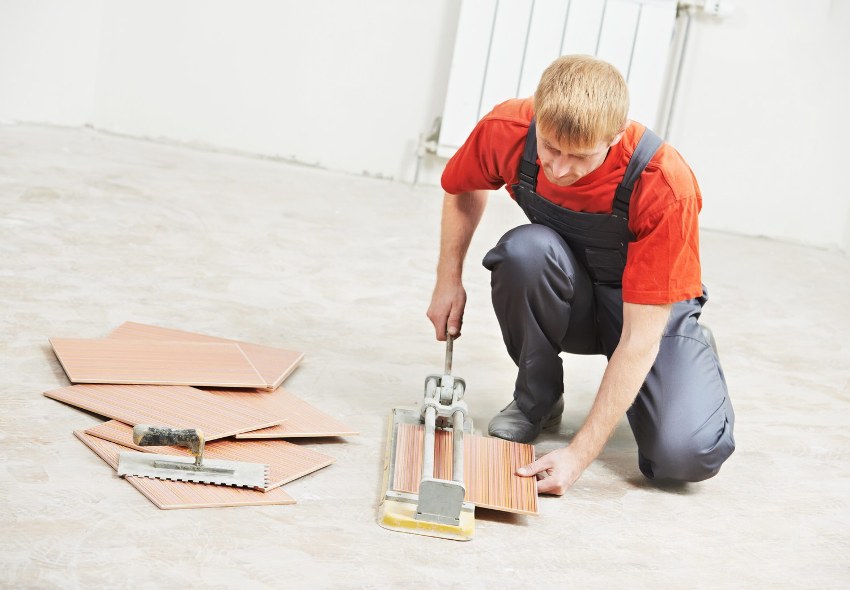
The manual tile cutter is the most common tool among both professionals and people doing DIY repairs.
It is often possible to cope with cutting tiles using a conventional tile cutter. A grinder is more often required for flooring than for wall covering, due to the difference in material thickness. But sometimes, for especially difficult places, you still have to use this tool in the process of laying tiles on the wall.
Useful advice! In the absence of a glass cutter, you can get by even less, using, for example, a tile cutter or a scraper with a victorious solder. In order to cut off the desired part, it is necessary to draw a cutting line, and then several times draw over the fixed element with the available tool as many times as necessary.
In order to achieve curly trimming, which is necessary for laying tiles around pipes, it is better to use a grinder with a diamond wheel. But if it is not available, and there are not too many holes to be made, then it is quite possible to use a cheap alternative - a diamond-coated canvas. True, in this case, much more time will be spent.
How to grout wall tiles
After all the tiles are laid, the gaps between the elements must be wiped with a special compound, which is called “grout". This mixture is designed to fill the voids between the tiles and provide reliable protection against moisture penetration under the coating. In order for this procedure to be as effective as possible, you must adhere to the following rules:
- you need to knead the grout in stages, usually this is done at the rate of 1-4 m² per approach. This will prevent the mixture from drying out before being used;
- all excess should be removed with a foam sponge until the solution completely dries;
- using the same sponge, the seams can be made smoother by evenly distributing the grout inside the seam;
- in the process of work, the spatula must be held at an angle of 15-30 degrees to ensure the most dense filling of the space with the mixture.
It is not difficult to figure out how to grout tile joints. If you have additional questions, you can always watch a video instruction or use step-by-step photos as a guide that demonstrate this process in as much detail as possible.
Another issue worthy of attention is the price of grouting tiles. It should be noted here that you can find two options on sale - a ready-made mixture and a dry powder, which you will need to dilute with water to the desired consistency yourself. Their cost will be different, for example, 2 kg of the finished mixture will cost about 259 rubles, and 2 kg of dry powder - 175 rubles.
What you need to pay attention to before how to glue tiles on the wall
Immediately before laying tiles on the wall with your own hands, you need to once again pay attention to several important aspects:
- all tiles must be carefully inspected for damage, scratches and chips. It is also useful to sort items by size. This will allow you to get the most even seams;
- in order for the laying of tiles on the wall with your own hands to turn out to be of no less quality than if it were done by a professional, you do not need to spare the primer and time for leveling and preparing the surface;
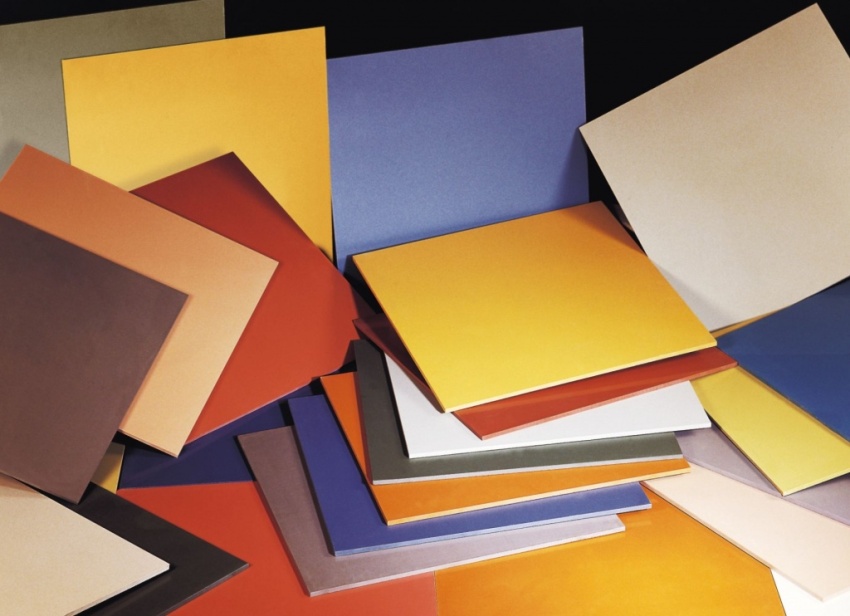
When purchasing a tile, it is worth buying it with a margin, since during the laying process, individual elements may be broken or incorrectly cut
- if you have to deal with the facing of the outer corners, you should use the plastic corners.
Often on specialized forums, users discuss interesting questions, for example, is it possible to put tiles on tiles or on another old coating without dismantling it. The answer to all such questions is unambiguous - you should not do this, and before you start laying new tiles, you need to remove the old tiles from the bathroom walls. How exactly to do this - we will consider further.
How to remove tiles from a bathroom wall: rules and recommendations
How easy it will be to remove the old tile from the wall surface depends largely on the surface on which it was laid. For example, if the surface has been pre-plastered, then the tile is relatively easy to remove along with the plaster. But if it is attached directly to a concrete or brick base, then the task will become somewhat more complicated.
It is very difficult to work with drywall, since by itself it does not have sufficient strength and in the process of removing the tile will receive so much damage that it will have to be replaced.
You need to start dismantling the coating with soaking. To do this, you can use a shower or a spray bottle. After the surface is moistened, you need to walk the grinder's disc along the tile seams. The better the grout removal is carried out, the easier it will be to carry out all subsequent work. Water is again poured into the resulting grooves to soften the glue a little, as a result of which some of the tiles themselves will begin to lag behind.
The top layer of the tile is tapped with a mallet. In those places where a thud is heard, it is worth starting the process. Using a chisel or chisel and hammer, the first tile is gently chipped off. After that, water is added again and the dismantling of the following elements continues in turn.
Useful advice! If there is a need to carefully remove one tile in a row, then this will require a drill with drills. A lot of holes (about 10-20) are drilled from the center to the edges and then the tiles are carefully chipped off.
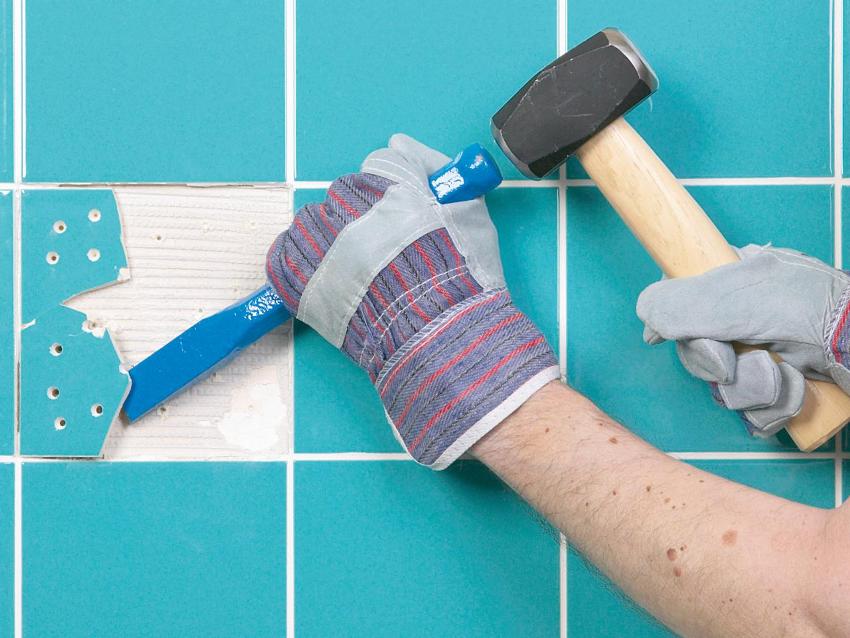
The technique of dismantling with the help of a bumper is to fall not into the tile, but under it, 2-3 centimeters from the edge
The quickest way to get things done is to use a hammer drill. However, in this case, it is not necessary to count on the fact that at least some part of the old tile will be preserved. And the sound will probably be loud, so it is better to warn the neighbors in advance about the upcoming repairs.
Having familiarized yourself with how to properly lay tiles in the bathroom on the walls, as well as having learned about all the options for dismantling the old coating, you can safely proceed to self-repair. As for the choice of the right material, the most important thing is that you like the characteristics, color and size of ceramic wall tiles, and harmoniously fit into the interior, correspond to the operating conditions.
